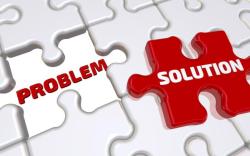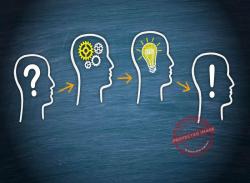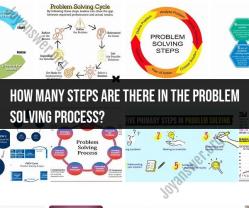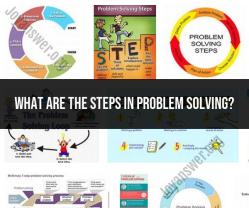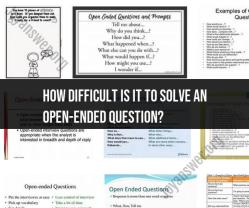What are the goals of problem solving?
The goals of problem-solving revolve around effectively addressing challenges, finding solutions, and achieving specific outcomes. Here are the key objectives:
1. Identify and Define the Problem:
The first step is to clearly understand the issue at hand. This involves recognizing the root cause, defining the problem scope, and framing it in a way that allows for a targeted solution.
2. Generate Alternative Solutions:
Problem-solving aims to brainstorm multiple potential solutions. The goal is to create a range of options that could effectively address the problem, fostering creativity and diverse thinking.
3. Evaluate and Select the Best Solution:
Once alternatives are generated, the next step is to assess each option critically. The objective is to weigh the pros and cons, considering feasibility, effectiveness, cost, time, and impact, to select the most suitable solution.
4. Implement the Solution:
Problem-solving isn’t complete until the chosen solution is put into action. The goal is to execute the plan effectively, considering logistics, resources, and timelines, and to ensure everyone involved understands their roles and responsibilities.
5. Monitor and Evaluate Results:
Problem-solving involves assessing the outcomes of the implemented solution. Monitoring progress allows for adjustments if necessary and helps in understanding whether the solution is effective in solving the initial problem.
6. Learn and Improve:
Continuous improvement is a key objective in problem-solving. Even if a solution is successful, there may be lessons to learn or areas to refine for future problem-solving endeavors. This iterative process supports ongoing growth and development.
7. Decision-Making and Risk Management:
Problem-solving aims to make informed decisions while managing risks. The goal is to minimize potential negative impacts and make choices that align with long-term objectives.
8. Enhance Collaboration and Communication:
Effective problem-solving often involves teamwork and collaboration. One of the goals is to foster an environment where ideas are shared, communication flows smoothly, and diverse perspectives are considered to arrive at the best solutions.
By achieving these objectives, problem-solving helps individuals and organizations navigate challenges more effectively, leading to improved efficiency, innovation, and overall success in addressing complex issues.
Problem-solving is a crucial cognitive process that involves identifying and resolving issues or obstacles to achieve a desired outcome. Effective problem-solving often follows a structured approach, guided by specific objectives that aim to systematically analyze, evaluate, and address the problem.
1. Objectives of Problem-solving:
The process of problem-solving is guided by several key objectives:
Identifying and defining the problem: The first step in problem-solving is to clearly identify and define the problem at hand. This involves understanding the nature of the problem, its scope, and its impact.
Gathering information and analyzing data: Once the problem is defined, it is essential to gather relevant information and analyze the available data. This may involve research, observation, and consultation with experts.
Generating potential solutions: After understanding the problem and its context, the next step is to generate potential solutions or alternatives. This involves brainstorming, creative thinking, and exploring different approaches.
Evaluating and selecting the best solution: The generated solutions need to be evaluated based on their feasibility, effectiveness, and potential consequences. The best solution is the one that most effectively addresses the problem while considering various factors.
Implementing the chosen solution: Once the best solution is selected, it needs to be implemented effectively. This may involve developing a plan, assigning tasks, and monitoring progress.
Evaluating the outcome and making adjustments: After implementing the solution, it is important to evaluate the outcome and assess its effectiveness. If necessary, adjustments or modifications may be needed to achieve the desired results.
2. Role of Defined Goals in Problem-solving:
Clearly defined goals play a crucial role in effective problem-solving. Goals provide direction, focus, and a sense of purpose to the problem-solving process. They help to ensure that the generated solutions and implemented actions are aligned with the desired outcome.
Clarity and Focus: Goals provide clarity and focus to the problem-solving process, preventing efforts from being scattered or misdirected. They help to prioritize actions and make decisions that directly contribute to achieving the desired outcome.
Motivation and Persistence: Defined goals can serve as a source of motivation and persistence throughout the problem-solving process. They remind the problem-solver of the ultimate objective and encourage them to overcome challenges and setbacks.
Measure of Success: Goals provide a measure of success for the problem-solving process. By comparing the achieved outcome to the predetermined goals, one can assess the effectiveness of the problem-solving efforts and identify areas for improvement.
3. Different Approaches Based on Problem-solving Goals:
The specific approach to problem-solving may vary depending on the nature of the problem and the desired goals. Some common problem-solving approaches include:
Analytical problem-solving: This approach involves breaking down the problem into smaller, more manageable components and systematically analyzing each part to identify the root cause and develop solutions.
Creative problem-solving: This approach emphasizes out-of-the-box thinking, brainstorming, and exploring unconventional solutions. It is often used when traditional methods fail to yield satisfactory results.
Collaborative problem-solving: This approach involves involving multiple individuals with different perspectives and expertise to work together in identifying, analyzing, and addressing the problem.
Decision-making problem-solving: This approach focuses on evaluating and selecting the best course of action among a range of potential solutions, considering various factors and potential consequences.
The choice of problem-solving approach depends on the specific context, the nature of the problem, and the available resources. Effective problem-solvers can adapt their approach based on the situation and utilize different techniques to effectively address challenges and achieve their desired goals.



